When Dr. Monica Norby and her colleagues took over teaching the microbiology practicals, they had a challenge to tackle. Students were completing their course without performing the core techniques of molecular microbial analysis that they’d studied.
“Before we had Bento Labs, we ran virtual molecular labs. Students would watch videos and study the protocols, but they never physically got to do the technique themselves. We knew that wasn’t what we wanted.”
For Monica, this absence of real practical experience highlighted a shortcoming in their students’ molecular biology education.
“Molecular techniques are so fundamental. If students can’t even say ‘I’ve run a gel before,’ then they’re behind the curve,” she explains. “We can teach students about biotechnology techniques in lectures, but until they see how those processes are done, they don’t really understand what it means to analyze DNA.”
When redesigning the practical courses, their goal was to move beyond demonstrations to provide genuine hands-on experiences for each student.
They also wanted to avoid replacing virtual labs with TA demonstrations. “Many students have told me, ‘In my other class, we just watched the TA do it.’ My reaction was, ‘What? You can watch that on a video! We want them to feel the little air bubble as you load your gel, and what it feels like if you push the micropipette too fast.”
But how do you maximize hands-on learning in molecular biology when traditional lab equipment strains both budgets and space?
When Monica discovered Bento Lab, she realized the affordable pricepoint meant they could invest into several units, and stretch their budget further. “With Bento Lab, we could afford enough units to give four students their own workstation instead of having a large group crowd around a single piece of equipment. That makes a huge difference for learning.”
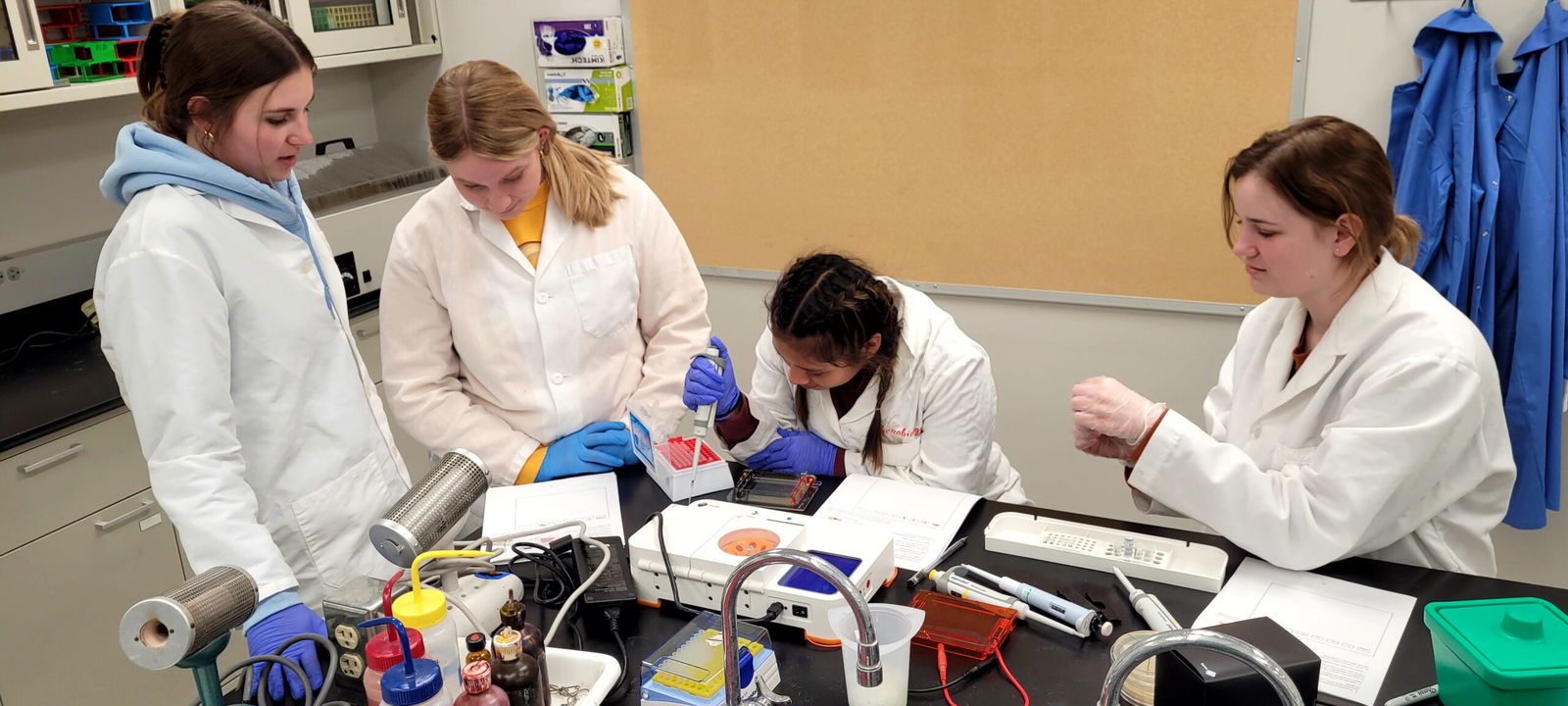
Students collaborate in small groups to complete real-world molecular biology investigations.
What also worked about Bento Lab was its all-in-one nature. “I really like that Bento Lab is one system, and it all fits together. From an instructor’s perspective, it’s just easier to manage one device than having students wandering around different areas with separate centrifuges, gel rigs, and thermocyclers. It all works together seamlessly versus trying to piece meal things together.”
Thanks to Monica and her colleagues’ efforts, 88 students now work in small groups solving real-world scenarios – from tracking hospital infection outbreaks to identifying the source of contaminated produce at a farmers market. Practicals have evolved into a dynamic laboratory experience where every student gets hands-on experience with PCR, gel electrophoresis, and other fundamental techniques.
As Monica and her team demonstrate, the transition from virtual to hands-on molecular biology education at scale is not only possible but tremendously valuable with the right approach, equipment, and support structure.
By prioritizing real, practical experience, Monica and her colleagues have made sure that students graduate not just having learned about these techniques, but having actually used them — giving them greater confidence in the lab and a stronger foundation for their future careers.
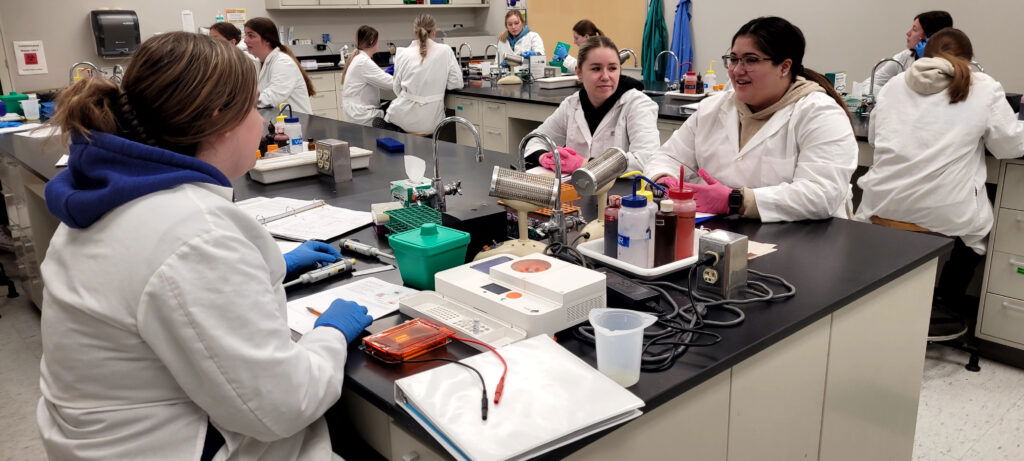
The class during the microbiology practical at University of North Dakota.
Making It Work: The Implementation Guide
A look at the details behind the course.
Course Structure
The class has grown by 30% in just one year, expanding from 68 students last year to 88 this year. Most of the students are juniors and seniors in biology, along with pre-health students who need the course for professional program applications.
The details:
- Two lab days per week with morning and afternoon sessions
- Four lab groups (morning A/B, afternoon A/B)
- 44 students at a time split between two rooms
- Two-hour time slots for each lab session
Curriculum Development
Rather than starting from scratch, Dr. Norby’s team found inspiration in a microbiology laboratory course book called “Challenges of the Unseen World: A Laboratory Course in Microbiology” and adapted the book’s inquiry-based approach to fit their specific needs.
Using the guide as a foundation, Dr. Norby and her colleagues developed two main “challenges” that would give students real-world experience with molecular techniques.
“We would not be able to do these challenges without the Bento Labs.”
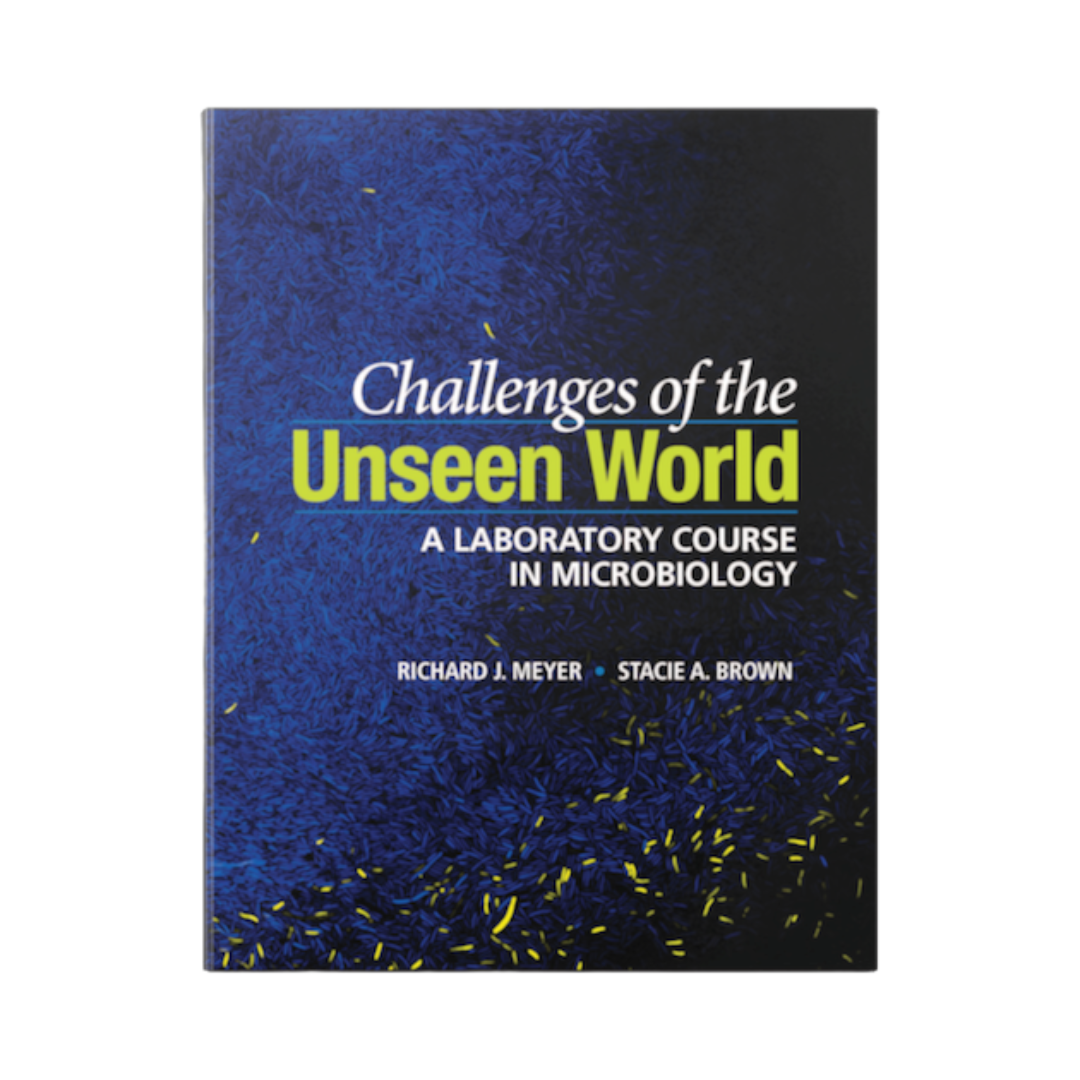
Challenge 1: CSI, the Hospital Edition
In the first challenge, students investigate a hospital-acquired infection and follow the molecular clues to track down the origin of the outbreak. Using molecular techniques, they:
- Collect samples from various hospital sites
- Amplify 16S rRNA gene using PCR
- Check results using gel electrophoresis
- Use sequence data and BLAST to identify the specific pathogen
- Track down the outbreak’s source by combining class-wide data
Challenge 2: The Farmers Market Mystery
In the second scenario, students track down the source of an E. coli outbreak at a farmers market. Using molecular techniques, they:
- Perform plasmid mini-preps from bacterial samples
- Conduct restriction digests
- Analyze DNA fragments using gel electrophoresis
- Compare band patterns to identify the contamination source
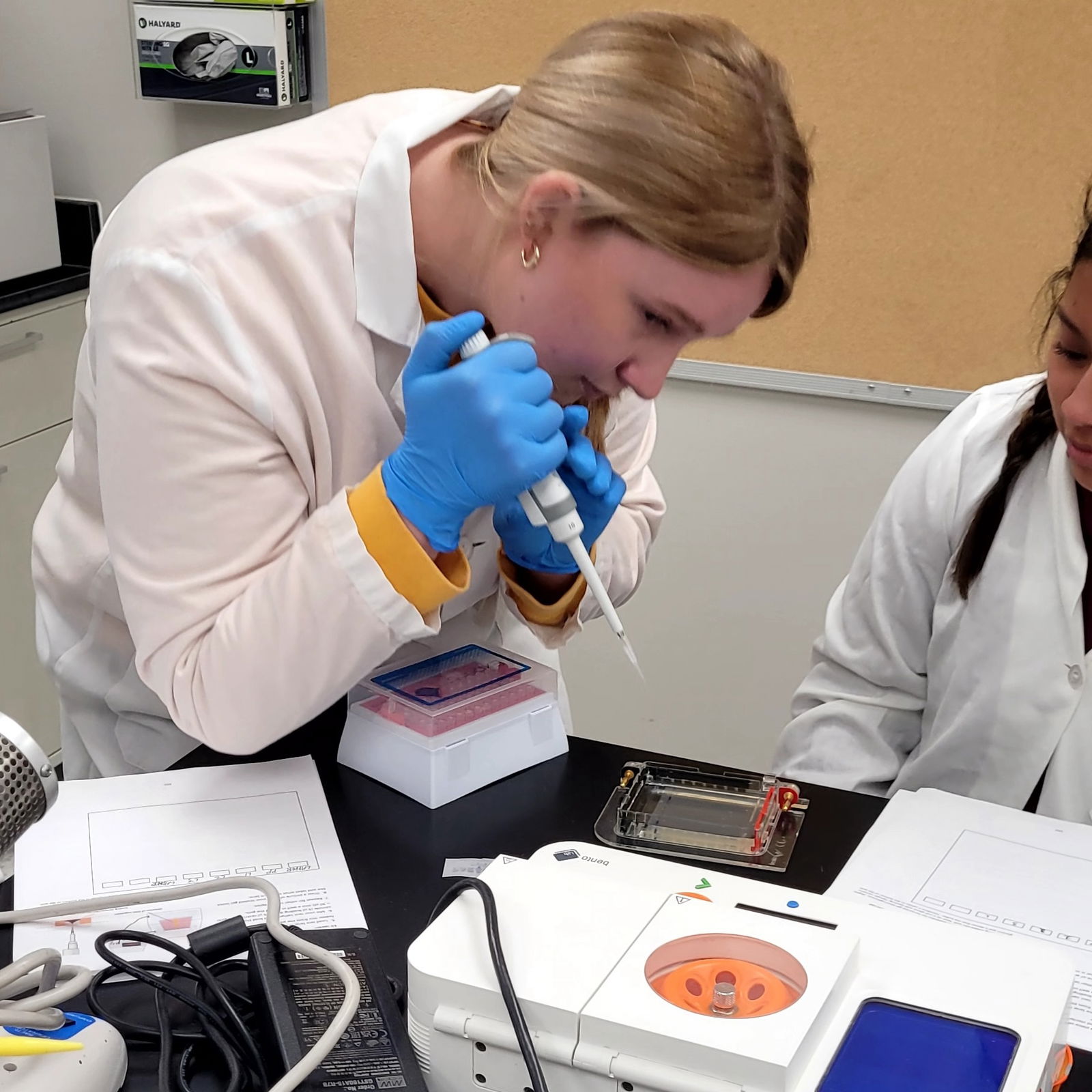
A student carefully loading a sample into a gel.
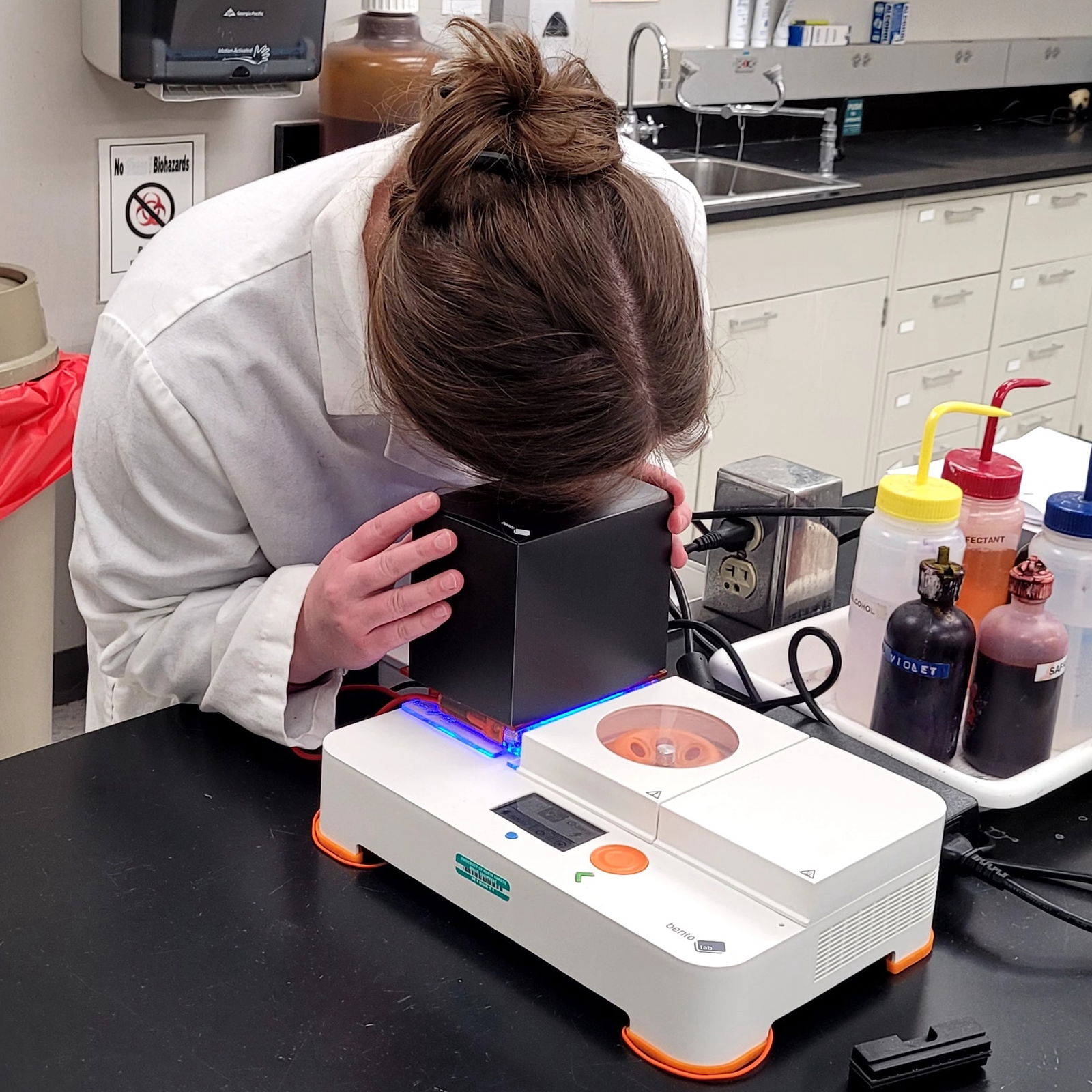
Viewing the results! Checking the gel on the transilluminator.
Peer Support System
The courses rely on a multi-level support structure:
- A lab manager oversees both morning and afternoon sessions
- Graduate teaching assistants handle the main instruction
- Undergraduate “peer teachers” provide extra help
The peer teaching program is particularly innovative: previous students return to help teach the lab, receiving course credit for their work.
“The peer teachers don’t instruct, but they’re there to help facilitate as extra hands,” Monica explains. “Sometimes you need those extra hands, because you can’t get to everybody at the same time.”
Key Insights
Dr. Norby offers several additional reflections for others looking to implement similar programs.
- Make It Real Watching students grasp real-world implications is powerful. When they see an infection spread, or track down the source of the outbreak, abstract concepts become tangible. “Practical experience creates color to what we’re doing in lecture and helps them understand the actual application of what we’re trying to demonstrate in lectures.”
- Don’t Try to Cover Everything “In microbiology, there are a lot of different microbial stains and biochemical tests that can be taught. I think that teaching fewer is okay, as you’re covering the key concepts. With our general microbiology course, I think it’s more important to introduce a breadth of techniques and concepts than it is to teach students to memorize details that they can look up.”
- Be Ready to Experiment The program continues to evolve and improve. “We’ve had time to play around and test out different things, and we’ve made modifications. As added learning experiences, our peer teaching assistants have helped us experiment to fine-tune our Bento Lab student experimental procedures.”
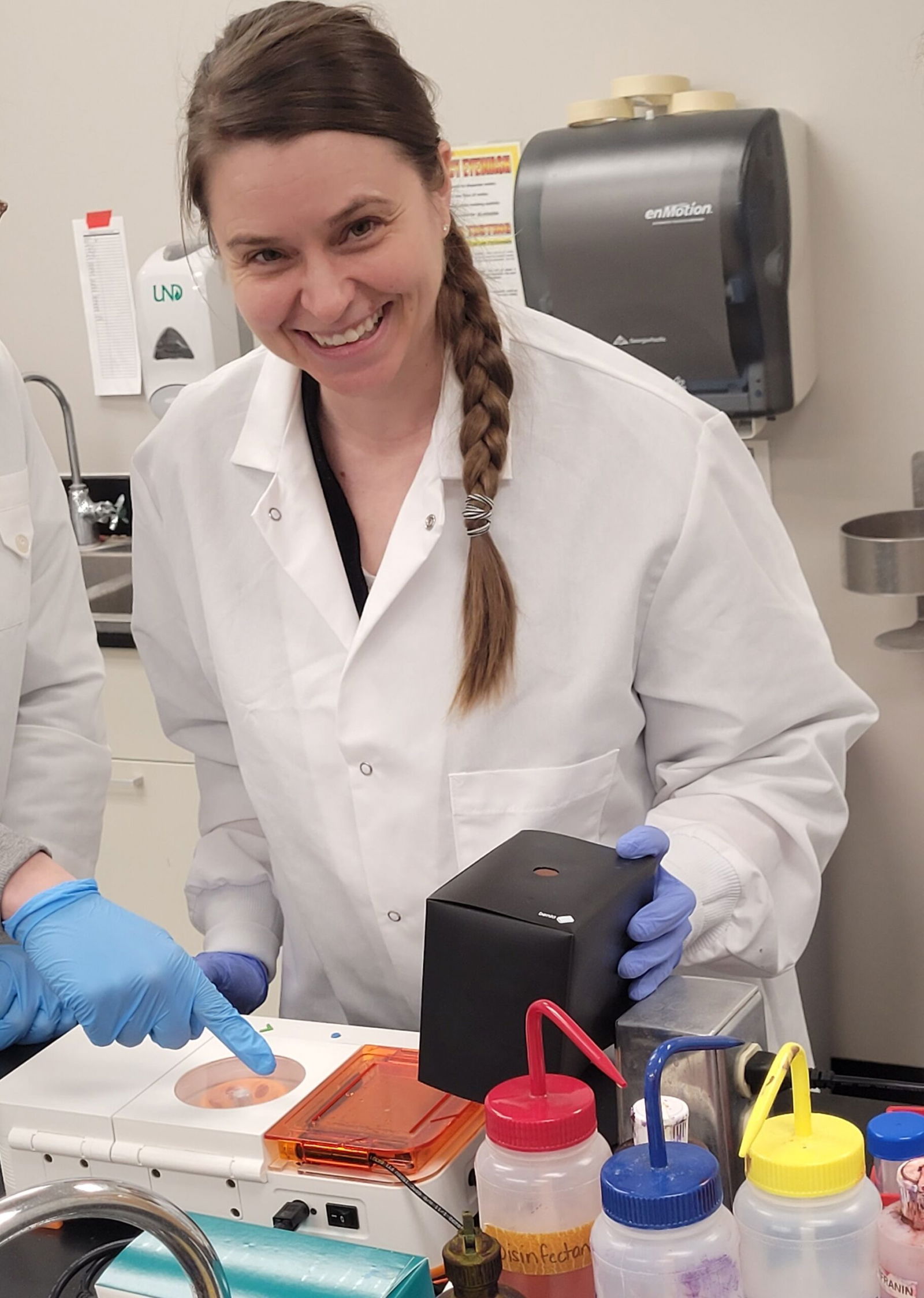
Dr Monica Norby – Checking the results!
Photos by Dr Monica Norby with thanks to the students of University of North Dakota!
Looking for advice on using Bento Lab?
Book a free consultation or ask a question.